I am using Julia 1.0 with the JuMP package to solve optimization problems. These are my first days using the language. Hence, I am not really comfortable with the syntax.
Following the Quick Start Guide, I was able to solve the problem bellow:
I used this code, which worked perfectly:
using JuMP
using GLPK
model = Model(with_optimizer(GLPK.Optimizer))
@variable(model, 0 <= x <= 6000)
@variable(model, 0 <= y <= 4000)
@objective(model, Max, (25*x) + (30*y))
@constraint(model, con, ((1/200)*x) + ((1/140)*y) <= 40)
optimize!(model)
termination_status(model)
primal_status(model)
dual_status(model)
println(objective_value(model))
println(value(x))
println(value(y))
As a consequence of the success from the implementation above, I tried to adapt the code to a new problem:
I know the differences between a classic Linear Program problem and one that explicitly defines only integer values.
In order to make it simple I treated the problem as a float one, considering x1 to be greater than 0 and smaller then 6.
I decided to let the integer aspect of the problem as a future step.
This is my code:
using JuMP
using GLPK
model = Model(with_optimizer(GLPK.Optimizer))
@variable(model, 0 <= x <= 6)
@variable(model, y>=0 )
@objective(model, Max, (x) + (2*y))
@constraint(model, con, x + y <= 8)
@constraint(model, con, -x + y <= 2)
@constraint(model, con, x - y <= 4)
optimize!(model)
termination_status(model)
primal_status(model)
dual_status(model)
println(objective_value(model))
println(value(x))
println(value(y))
For some reason, I receive the following error messaging:
ERROR: LoadError: An object of name con is already attached to this model. If this is intended, consider using the anonymous construction syntax, e.g., x = @variable(model, [1:N], ...) where the name of the object does not appear inside the macro.
I tried to change some things and to read the documentation. Nonetheless, macros seem as a strange concept for me.
After some tries, I decided to ask for help.
Thanks in advance.

